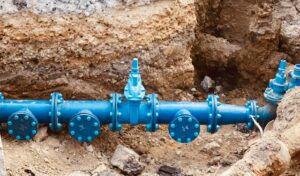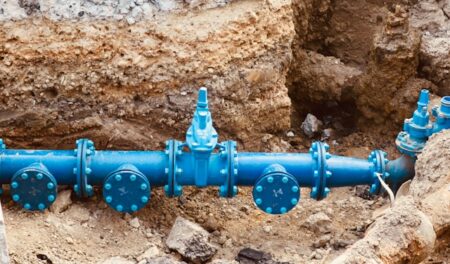Modernizing your home can be effortlessly achieved through the professional painting of your kitchen and bathroom cabinets. High-quality, KCMA-approved solvent and water-based paints are skillfully applied, providing cabinets and doors with a flawless, consistent finish and vibrant colour undertones. This process breathes new life into even the oldest and most worn cabinets, offering a cost-effective alternative to the labor-intensive and expensive replacement of the entire set. Most homes possess cabinets made from quality natural wood or wood composite materials designed to withstand the test of time. Through meticulous cleaning, sanding, priming, and multiple coats of high-quality paint, cabinets can be transformed to look virtually new. This article explores the five main factors considered by painting companies when determining the cost of painting kitchen or bathroom cabinets.
1. Number of Doors and Drawer Fronts
The cost of the project primarily depends on the number of cabinet doors, drawer fronts and any other pieces removed from the home. These components undergo a comprehensive process in a professional spray booth, including cleaning, sanding, fixing, and filling, followed by spraying with proper airflow and dust containment measures. The pricing is usually fixed per piece, irrespective of size or detail. Additional costs may arise from issues such as stripping previous paint layers or removing thermofoil. The majority of kitchen cabinets, whether oak, maple, or wood composite, can be easily sanded, filled, and refinished to achieve a brand-new appearance.
2. Scope and Complexity of the Job
The number of pieces in a kitchen provides insight into the size of the interior spraying area. Kitchens are categorized based on the quantity of doors and drawer fronts, with average sizes ranging from smaller (15-30 pieces) to medium (30-50 pieces) and large (over 50 pieces). Most kitchens follow a standard construction, but some may have additional complexities like interior lighting, glass doors, or specialized drawer units. Unique or custom designs may incur added costs due to a higher level of detail in the preparation process.
3. Amount of Prep Needed
A standardized procedure is applied to prep almost all kitchens, ensuring consistent project costing. This preparation includes addressing flooring, countertops, backsplash, walls, masking off interior boxes, caulking gaps, and dust containment. Since most cabinet painting projects occur in occupied homes, a high level of attention to detail and thorough preparation is crucial. Costs for prep may vary in renovation projects based on factors such as whether walls are being painted afterward and the absence of flooring or backsplash. Regardless, meticulous attention to detail is essential for well-painted cabinets, relying on clean lines, proper sanding/filling, and avoiding overspray.
4. Common Issue Areas
Additional costs may arise from common issue areas in kitchens, such as an excess of non-paintable silicone sealant, water damage, or loose construction. While these issues are fixable by experienced painters, they contribute to the overall cost due to the time and expertise required to address and prevent future problems. For instance, a kitchen with non-paintable silicone under countertops and along floor edges may take longer to prep compared to a similar-sized kitchen without silicone. Removing and reapplying non-paintable sealants is necessary to prevent reactions with painted surfaces.
5. Keeping versus Replacing Hardware
The final cost consideration lies with the client’s preference, offering options for full customization and colour choice. Handles and pulls come in various colours and designs, and cabinet hardware provides luxuries like soft-close mechanisms and smooth-sliding drawers. While painting companies may offer hardware upgrades upon reinstalling cabinet doors, keeping existing hardware, especially if it’s in good working condition, is the easiest way to keep project costs down. Brass and silver hardware are versatile choices that complement various colour schemes and designs.
In conclusion, understanding the five main factors influencing the cost of painted cabinets provides homeowners with valuable insights into the nuances of the process. From the number of doors and drawer fronts to the scope and complexity of the job, the amount of prep needed, common issue areas, and the decision to keep or replace hardware – each element contributes to the overall cost of the project. By delving into these factors, homeowners can make informed decisions when embarking on the journey to revitalize their living spaces through professionally painted cabinets.








